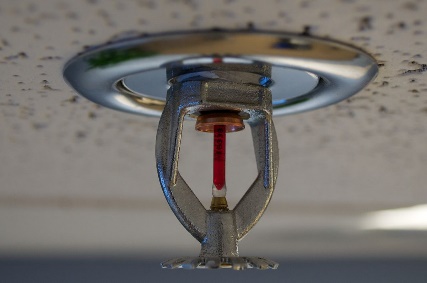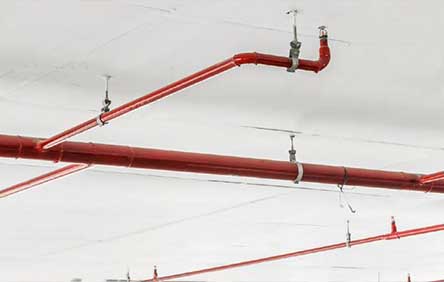
Fire Fighting System
The basic principle of firefighting is simply based on the extraction of one of the components of the fire triangle. This can be achieved by eliminating either the fuel, oxygen or the ignition sources. Once one of the components of the fire triangle is removed from completing the reaction the resultant fire will be curbed. It is best to avoid the three components reacting together than removing one of them from an already completed reaction which has resulted to fire.
However, unplanned to habitants of facility there could be a fire breakout which will need some technologically engineered system to purge the burning flame. Some of this approach can be automated, manual or a hybrid where there will be some level of human activation before the automated process starts.
Firefighting involves alerting; this is a phase where the emergency has been identified either by audio or visual by the fire alarm system, after which the response system comes into play. These response systems can either be a suppression system by the use of an agent, water or foam based solution. In some cases the response system can be a total shut down of the facility, a process that has been automated at the installation and commissioning phase as prescribed by the client.
Below are some of these aforementioned systems.
Fire Alarm System
An Addressable Fire Alarm System comprises a Control Panel which communicates directly with a Smoke Detectors(s), Manual Call Point and the Sounder.
So in the event of a fire, the fire panel will display the exact device (detector or call point) that signaled the alarm, allowing the fire to be located more quickly.
On a Conventional System or 2 Wire Systems, there are often more than 10 detectors on a zone, so by examining the main panel, the user only knows that one of these ten detectors has signaled an alarm, meaning that further investigation is required to locate the fire.
This device addressability is considered to be the main advantage of an addressable fire alarm system, however there are also other benefits including cabling, alarm history, programmability and more.
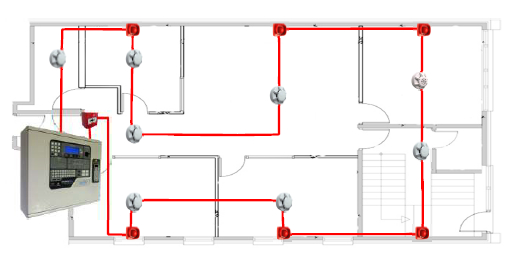
FM-200 Fire Suppression System
FM200 is a waterless fire protection system, it is discharged into the risk zone within 10 seconds and suppresses the fire immediately after the smoke detectors have sensed the hazard (fire, smoke etc.).
FM200 is a synthetic/chemical fire suppression gas and extinguishes a fire by removing the free radicals or heat elements from the fire triangle. (Oxygen, Heat and Fuel).
The typical concentration of an FM200 system is normally between 7.9% to 8.5%. This concentration is determined by the risk that is being protected and by the OEM (Original Equipment Manufacturers) and the ISO14520 standards for fire suppression systems.
FM200 systems reach extinguishing levels in 10 seconds or less, stopping ordinary combustible, electrical, and flammable liquid fires before they cause significant damage. FM200 extinguishes the fire quickly, which means less damage, lower repair costs. Like any other fire suppression system, FM200 systems are designed with an extra margin of safety for people. Refilling FM200 is simple and cost effective, therefore, it also means less downtime and disruption to your business.
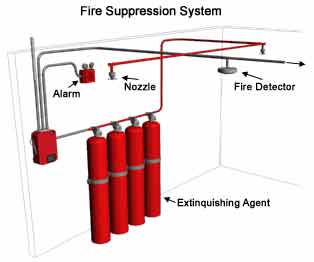
Fire Extinguishing Cylinder
Class B
EASY TO USE
CO2 is particularly effective on class B liquid or liquefiable solid fires (hydrocarbons, chemical products, plastics, etc.). It is used in kitchens, laboratories, on precision machinery, etc.
Operation
Very easy to use. After removing the safety pin, press the control lever. This lever releases the CO2 and controls the flow rate by means of a check valve located inside the head cap. The cap also contains a safety valve which releases
CO2 if the pressure becomes too high, notably after prolonged exposure to a temperature above 60°C.
TECHNICAL PROPERTIES
This extinguisher was designed using highly reliable materials and the latest anticorrosion protection technologies in order to be ideally suited to industrial environment requirements.
It complies with European standard EN 3 and is one of the highest performance devices in its category.
Class ABC
These complex fires, containing all three types of combustible materials, often combined with an electrical power source, are in practice extremely common. It is therefore safer and more cost-effective not to have different extinguishers for each type of fire. The multi-purpose nature of ABC powder is thus perfectly suited to all risks.
EASY TO USE
Operation
Once the safety pin has been removed, press the striking handle to pressurize the extinguisher. The flow rate is controlled by the spray gun.
TECHNICAL PROPERTIES
Designed using highly reliable materials and the latest anti-corrosion protection technologies in order to be ideally suited to industrial environment requirements. It complies with European standard EN 3 and is one of the highest performance devices in its category.

Fire Hose Reel and Hydrant System
A fire hose or hydrant system is a high-pressure hose that carries water or other fire retardant (such as foam) to a fire to extinguish it. It attaches either to a fire engine or a fire hydrant indoors, it can permanently attach to a building's standpipe or plumbing system.

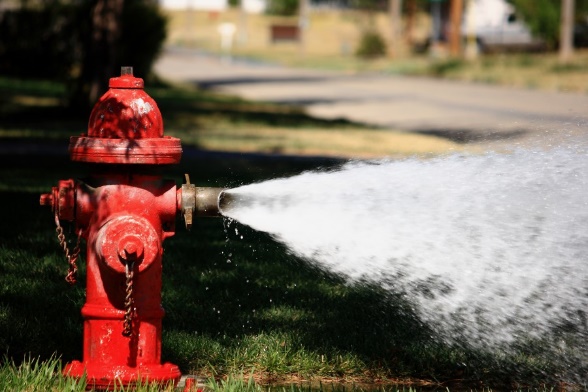
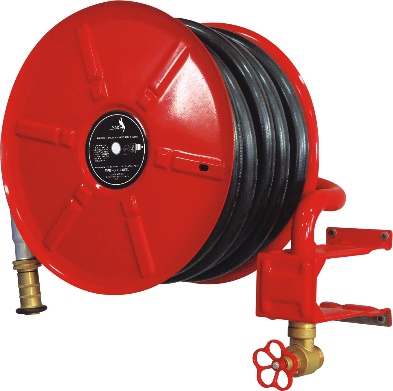
Foam Based Firefighting System
The “foam” in foam fire suppression systems is an extinguishing agent that can extinguish flammable or combustible liquid by cooling and separating the ignition source from the surface. The foam suppresses and smothers fire and vapors alike. It can also prevent reigniting. It is also known as “firefighting foam.”
This foaming agent is made up of small air-filled bubbles that have a lower density than water. Foam is made up of water, foam concentrate, and air. Different manufacturers have their own foam solutions and concentrate. The proportion of foam to water depends on the application.
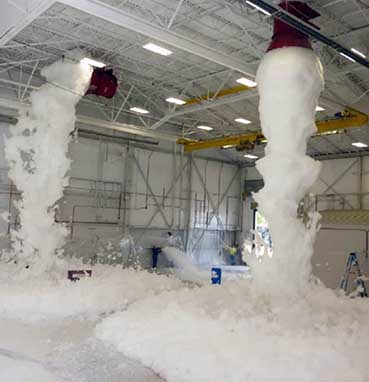

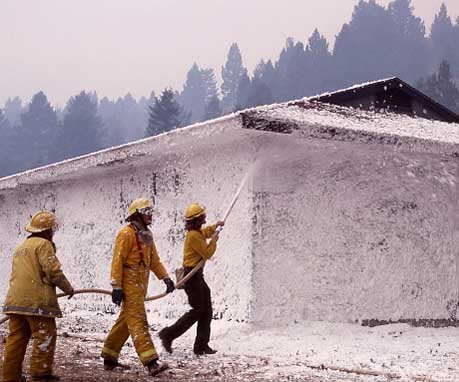
Emergency Shutdown System
An emergency shutdown (ESD) controller provides output signals to the ESD valve in the event of a failure in the process control system and fire related emergencies.
A solenoid valve responds to the ESD controller to vent the actuator to a fail state. A digital valve controller (DVC) test strokes the ESD valve.
An impedance booster device enables the DC powering of the solenoid valve and the DVC over a two wire line while still permitting digital communication over the same two wire line.
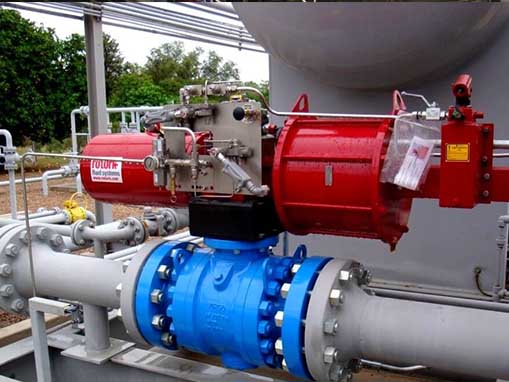
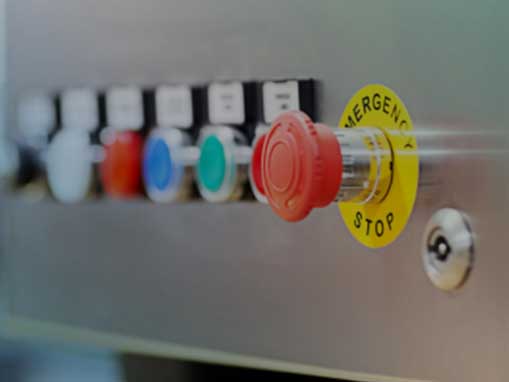
Fire Tender / Firefighting Truck
A fire engine (also known in some places as a fire truck or fire lorry) is a road vehicle (usually a truck) that functions as a firefighting apparatus. The primary purposes of a fire engine include transporting firefighters and water to an incident as well as carrying equipment for firefighting operations. Some fire engines have specialized functions, such as wildfire suppression and aircraft rescue and firefighting, and may also carry equipment for technical rescue.
Fire engines are based on commercial vehicle chassis that are further upgraded and customized for firefighting requirements. They are normally fitted with sirens and emergency vehicle lighting, as well as communication equipment such as two-way radios and mobile computer technology.
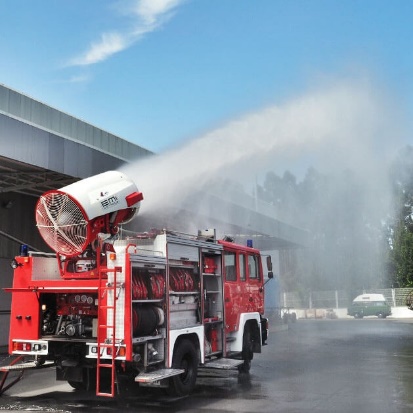

Water Based Sprinkler Systems
This is a method of fire suppression, consisting of a water supply system, providing adequate pressure and flow rate to a water distribution piping system, onto which fire sprinklers are connected. Although historically only used in factories and large commercial buildings, systems for homes and small buildings are now available at a cost-effective price.[1] Fire sprinkler systems are extensively used worldwide, with over 40 million sprinkler heads fitted each year. In buildings completely protected by fire sprinkler systems, over 96% of fires were controlled by fire sprinklers alone
